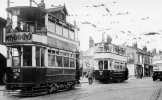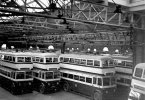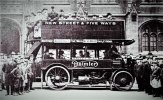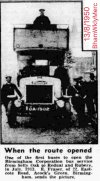-
Welcome to this forum . We are a worldwide group with a common interest in Birmingham and its history. While here, please follow a few simple rules. We ask that you respect other members, thank those who have helped you and please keep your contributions on-topic with the thread.
We do hope you enjoy your visit. BHF Admin Team -
HI folks the server that hosts the site completely died including the Hdd's and backups.
Luckily i create an offsite backup once a week! this has now been restored so we have lost a few days posts.
im still fixing things at the moment so bear with me and im still working on all images 90% are fine the others im working on now
we are now using a backup solution
You are using an out of date browser. It may not display this or other websites correctly.
You should upgrade or use an alternative browser.
You should upgrade or use an alternative browser.
Birmingham Corporation bus history
- Thread starter Peter Walker
- Start date
devonjim
master brummie
When I read a type set list such as these I take the information as "gospel" BUT in table 5 I trust my memory over the information given for the extension of Route 15B on 29/08/1948 to Sheldon Heath. As a family we moved to Garretts Green on 4th December 1948, our first house, and I have a distinct memory of walking to Bilton Grange to catch the 15B to town for the first few weeks of our time there.On the table of routes, unfortunately Table 1 ( if there was one) seems to have gone missing, but here are Tables 2,3,4,5


Radiorails
master brummie
The book by Malcolm Keelley states that the 15B variant of the 15/16 routes. (1958 saw the 17 extension to Meadway with 17J as far as Garretts Green Lane. The original 15B commenced on 23/11/1938. Initially it ran as far as Horrell Road but on 23/1/1949 was it extended to Sheldon Heath Road island. The destination blind usually read Garretts Green Lane 15B.
Radiorails
master brummie
Many rush hour buses terminated short of what was called the city loop - I believe this started in the late 1950's and existed into the mid 1950's (maybe later). Some buses bore the destination MOAT ROW, others ETHEL STREET. This saved a journey around the city loop and ensured an empty bus as it commenced its return to the suburbs. The buses often filled up when travelling the loop. Another variant was the 29/29A services which curtailed the long cross city journey only going as far as the the loop. The blind simply read CITY. Fortunately the citizens of Brum were familiar with these arrangements, visitors less so. Despite the highways department causing a few headaches for the BCT it was nothing compared to the forthcoming deviations as new roads were carved through once densely populated areas. I believe the early days of the PTE was a passengers nightmare when operational matters were more important than passenger needs.
I was not there to witness it so can only accept what many relate.
I was not there to witness it so can only accept what many relate.
Gerry Cannell
master brummie
Just an aside really, but when I went back on the buses in 1976, I was based at Sutton garage, with the Midland Red, and was driving all BMMO buses. Then, when we were taken over by WMPTE, we had an influx of veri slow, and tatty Metro Cammell buses, which, after driving D.9 and the Volvo ailsa turbo, came as a bit of a shock to the system. The Fleetline (I think it was) was an awful flat motored bus, no power at all, and I remember being late on almost all my runs. Sorry if I went of subject there....
Lloyd
master brummie
This view is the roadway outside Arthur Street depot - rails in the foreground turn into the depot. Trams for the Bordesley routes and the Trolleybuses for Coventry Road were garaged here. This post war view was taken on the occasion of an enthusiasts' tour on the front tram, 522, no doubt travelling routes soon to close.
Attachments
Dave C
master brummie
Thanks Lloyd this is very interesting.Trolleybuses (& a motorbus!) parked inside Arthur Street depot. Post war photograph.
Gary collins54
proper brummie kid
My grandfather was a driver there in the war years Tom Courtney his name
Ressalad
Leave blank please. I didn`t add Brummie Babby.
Radiorails
master brummie
This is not a Birmingham Corporation bus, but one of the first Milnes-Daimlers belonging to the Birmingham Motor Express Co. which entered service in 1904. BME Co, was to become B&MMO aka Midland Red.
Last edited:
Lloyd
master brummie
These ran as a 'feeder' service to the Bristol Road trams, which only ran to Selly Oak at first. As the line was later extended to Northfield, and then Longbridge, the bus service was adjusted. The Daimler chassis of these buses were commandeered by the army in 1914 at the start of 'the Great War' and were replaced in 1915 by Tilling Stevens petrol-electrics, which the military favoured less. These took the bodies and registration numbers of the Daimlers, the licencing regulations allowed such things back then! Here is another of the same batch carrying an ex-Daimler body. (Note: In the photo above the registration looks like "OA 1802", but is actually "OA 1602".)One of the first rust Corporation buses on the Selly Oak/Rednal/Rubery route. Viv.

Last edited:
Richard Dye
master brummie
These transit maps are very revealing clearly showing the expansion of the city and surrounding areas! Progress marches on.Bus Route maps, 1923. 1929 and 1939 . the file names have become a bit distorted, but this seems to be right














